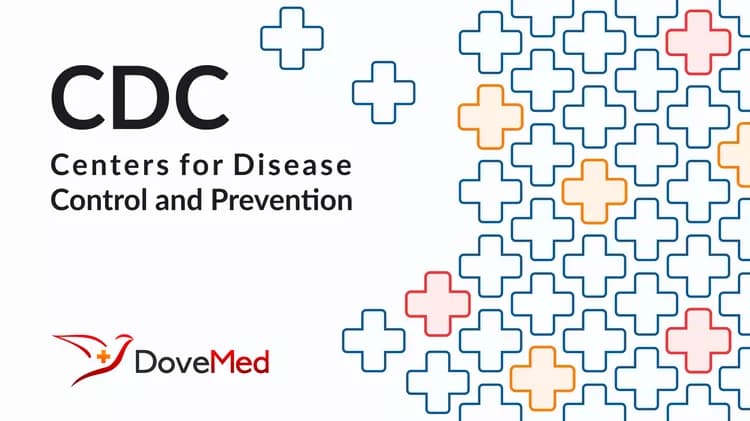
New Technology Reveals Higher Number of New HIV Infections in the United States than Previously Known
New Technology Reveals Higher Number of New HIV Infections in the United States than Previously Known
Related Media Materials
Fact Sheet: Estimates of New HIV Infections in the United States
Figures and Charts
Audio and Video Resources
Spokesperson Photos
The Centers for Disease Control and Prevention (CDC) announced today that an estimated 56,300 HIV infections occurred in the United States in 2006. That estimate differs from the agency's previous estimate of 40,000 because CDC is now using a more precise method for estimating annual HIV incidence, which is the number of individuals who become newly infected with HIV in a given year. The new estimate is published today in a special HIV/AIDS issue of the Journal of the American Medical Association, released at the XVII International AIDS Conference in Mexico City.
"These data, which are based on new laboratory technology developed by CDC, provide the clearest picture to date of the U.S. HIV epidemic, and unfortunately we are far from winning the battle against this preventable disease," said CDC Director Dr. Julie Gerberding. "We as a nation have to come together to focus our efforts on expanding the prevention programs we know are effective."
The new estimate is derived from the first national surveillance system of its kind that is based on direct measurement of new HIV infections and builds on a new laboratory test (the BED HIV-1 Capture Enzyme Immunoassay) that can distinguish recent from long-standing HIV infections. CDC's prior annual HIV incidence estimate was based on indirect and less precise methods available at the time.
A separate CDC historical trend analysis published as part of today's study suggests that the number of new infections was likely never as low as the previous estimate of 40,000 and has been roughly stable overall since the late 1990s.
"It's important to note that the new estimate does not represent an actual increase in the number of new infections, but reflects our ability to more precisely measure HIV incidence and secure a better understanding of the epidemic," said Kevin Fenton, M.D., director of CDC's National Center for HIV/AIDS, Viral Hepatitis, STD, and TB Prevention. "This new picture reveals that the HIV epidemic is – and has been – worse than previously known and underscores the challenges in confronting this disease."
Burden Greatest Among Gay and Bisexual Men of All Races and African Americans
CDC's new surveillance system also provides more precise estimates than previously possible of new infections in specific populations. Results confirm that the impact of HIV remains greatest among gay and bisexual men of all races and among African American men and women. In 2006, men who have sex with men (MSM) accounted for 53 percent of those with new infections (28,700), heterosexuals for 31 percent (16,800), and injection drug users (IDU) for 12 percent (6,600). Infection rates among blacks were 7 times as high as whites (83.7/100,000 people versus 11.5/100,000) and almost 3 times as high as Hispanics (29.3/100,000 people), a group that was also disproportionately affected.
"Too many Americans continue to be affected by this disease," stressed Fenton. "These new findings emphasize the importance of reaching all HIV-infected individuals and those at risk with effective prevention programs."
Separate Trend Analysis Sheds New Light on History of U.S. Epidemic
In addition to the 2006 HIV incidence estimates, CDC conducted a separate, historical analysis that provides new insight into HIV incidence trends over time – overall and for specific populations. Results confirm dramatic declines in the number of new HIV infections from a peak of about 130,000 in the mid-1980s to a low of roughly 50,000 annual infections in the early 1990s. However, findings also indicate that new infections increased in the late 1990s, but have remained roughly stable since that time (with estimates ranging between 55,000 and 58,500 during the three most recent time periods analyzed).
"Prevention can and does work when we apply what we know," said Richard Wolitski, Ph.D., acting director of CDC's Division of HIV/AIDS Prevention. "While the level of HIV incidence is alarming, stability in recent years suggests that prevention efforts are having an impact. In this decade, more people are living with HIV and living longer than ever before due to advances in treatment. Even though this could mean more opportunities for transmission, the number of new infections has not increased overall."
The analysis revealed some other encouraging signs of progress as well as significant challenges among specific groups. Findings indicated reductions in new infections among both injecting drug users and heterosexuals over time. Yet, the findings also indicate that HIV incidence has been steadily increasing among gay and bisexual men since the early 1990s, confirming a trend suggested by other data showing increases in risk behavior, sexually transmitted diseases and HIV diagnoses in this population throughout the past decade. The analysis also found that new infections among blacks are at a higher level than any other racial or ethnic group, though they have been roughly stable, with some fluctuation, since the early 1990s.
"These data confirm the critical need to revitalize prevention efforts for gay and bisexual men of all races and to build upon the growing momentum in the African American and Hispanic communities to confront HIV," said Wolitski. "We must all remember that we are dealing with one of the most insidious infectious diseases in history. Reducing this threat will require action from everyone – individuals at risk, community leaders, government agencies and the private sector."
For more information on HIV prevention, visit www.cdc.gov/hiv or www.aids.gov.
###
U.S. DEPARTMENT OF HEALTH AND HUMAN SERVICES
Related Articles
Test Your Knowledge
Asked by users
Related Centers
Related Specialties
Related Physicians
Related Procedures
Related Resources
Join DoveHubs
and connect with fellow professionals

0 Comments
Please log in to post a comment.